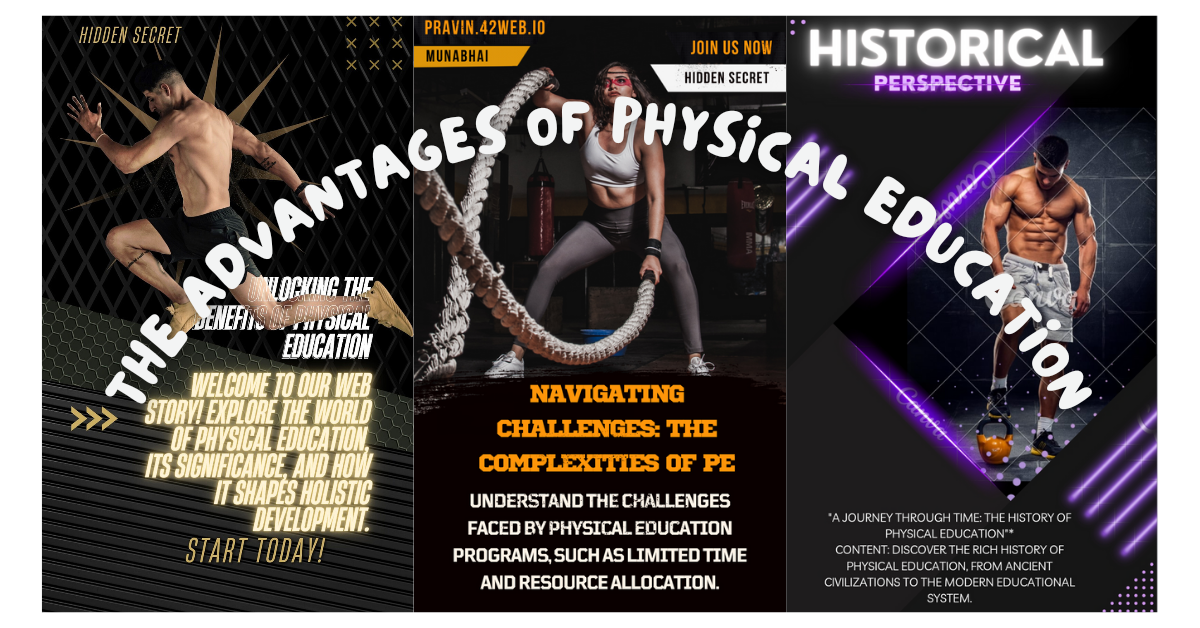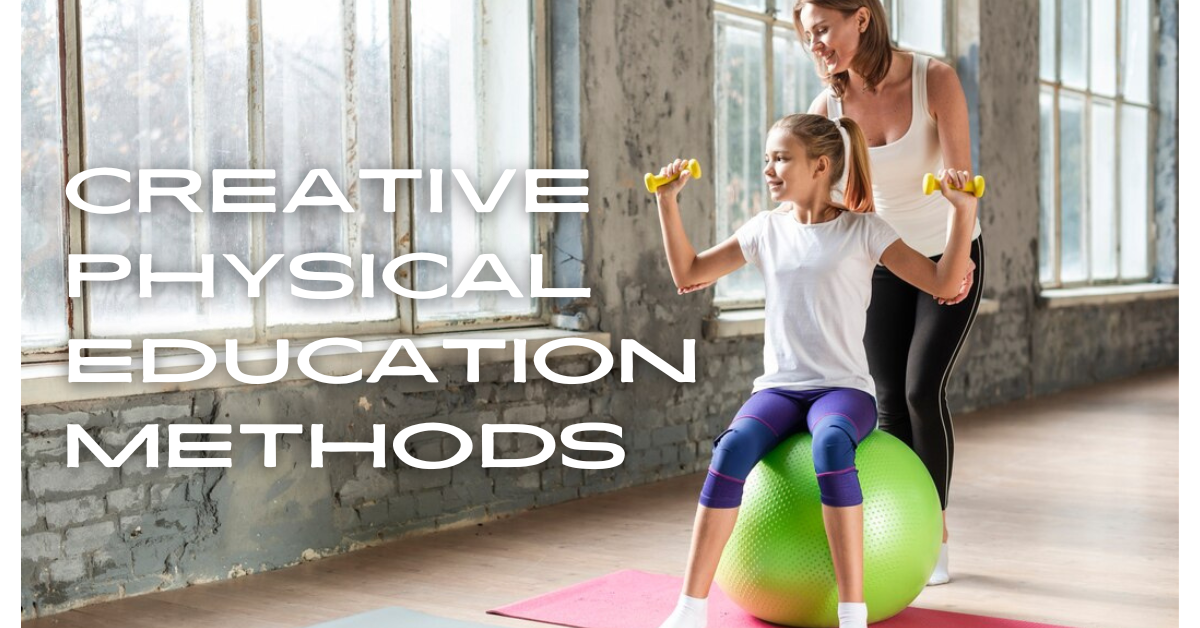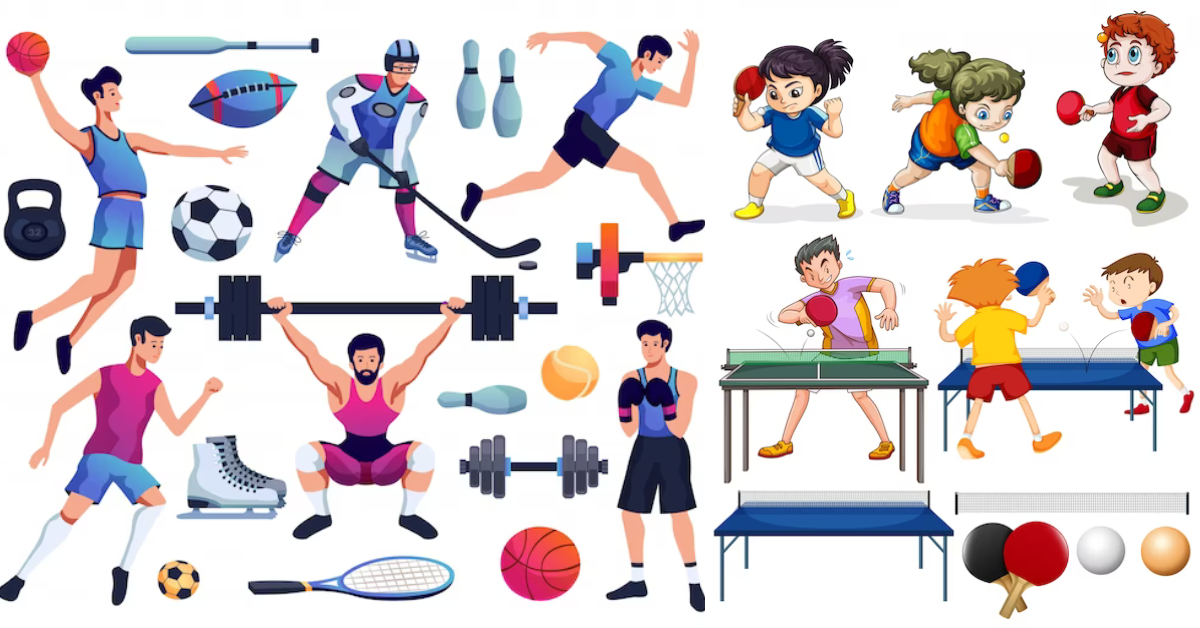Physical Education's Important Part in Whole Child Development
Physical Education's Important Part in Whole Child Development
A well-rounded education have to contain physical education, or PE for short. It includes a wide range of activities intended to increase physical fitness, develop motor skills, and build lifelong habits of health and wellness. It is not simply about running laps or playing sports. We shall explore the relevance, advantages, difficulties, and cutting-edge methods of Physical Education's Important Part in Whole Child Development in this extensive blog article. You will fully comprehend the importance of physical education for kids of all ages and skill levels once you have finished reading.
Historical Background
Ancient civilizations have a long and rich history with physical education. For example, the Greeks valued physical fitness highly and created the Olympic Games as a symbol of their dedication to physical prowess. The Spartans, on the other hand, made hard physical training a crucial aspect of their educational system. Similar to today, the Romans encouraged physical activity to develop robust soldiers and populace.
The development of modern physical education in Europe can be seen in the 19th century, which was fueled by the idea that physical fitness was crucial for general wellbeing. Education reformers like Charles Follen and Catherine Beecher promoted the idea of organised physical education in schools after it eventually made its way to the United States.
Read more : Contact Lens Care: Protecting Your Eyes
The Purposes and Goals of Physical Education
In today's school environment, physical education has several functions.
- The most obvious objective is to increase physical fitness. Students who take physical education classes improve their body composition, muscular strength, and cardiovascular endurance.
- Motor Skills : PE promotes the growth of basic motor abilities, such as running, jumping, throwing, and catching, which are essential for a child's physical development.
- Lifelong Wellness : It instills habits that can last a lifetime by educating children about the value of consistent physical activity, a balanced diet, and overall wellness.
- Teamwork and Sportsmanship : Playing team sports helps develop traits like cooperation, leadership, and sportsmanship.
- Stress Reduction : Exercise is a great way to decompress. Regular physical education lessons can ease anxiety and enhance mental health.
The advantages of physical education
- Physical Health : Regular exercise reduces the risk of obesity, heart disease, diabetes, and other long-term health issues. Additionally, it strengthens the immune system, lowering the risk of sickness.
- Mental Health : Exercising causes the production of endorphins, which naturally improve mood. Fighting off stress, anxiety, and depression can be aided by physical education.
- Academic Performance : Research has found that pupils who take part in physical education generally outperform their peers in the classroom. Focus, memory, and cognitive function are all enhanced by exercise.
- Social Skills : Physical education sessions encourage social interaction, assisting children in making friends and mastering critical social skills.
- Discipline and Responsibility: As students learn to balance their academic and athletic goals, regular participation in physical education teaches them discipline, responsibility, and time management.
- Long-Term wellbeing : Physical education lays the groundwork for longterm wellbeing by instilling in kids the value of exercise and a healthy lifestyle.
Obstacles and Disputations
Despite the obvious advantages of physical education, its implementation is fraught with difficulties and disputes:
- Limited Time : Due to time restrictions, many schools are under pressure to devote more time to academic courses, frequently at the price of physical education.
- Allocation of Resources : Not all schools have access to the facilities, tools, and instructors that are necessary for a successful physical education program.
- Inclusivity : PE classes have to be accessible to pupils of all fitness levels and aptitudes. There are worries that some pupils may experience marginalization or inferiority in PE classes.
- Standardized Testing: Some educational systems place a lot of emphasis on standardized testing, which leaves little opportunity for physical education. This may result in a limited view of education that prioritizes academic success over all-around growth.
Creative Physical Education Methods
Innovative strategies are being used to solve these issues and advance physical education:
- Blended Learning : Using technology and online resources to provide PE material and track progress offers for flexibility.
- Inclusive PE: Schools are creating programs to accommodate children with a range of abilities, ensuring that everyone can take part and profit.
- Cross-Curricular Integration : Some teachers are fusing PE with other disciplines like science (studying the human body and its operations) or math (calculating angles and distances in sports).
- Active School Environments : Schools are setting up settings that encourage exercise all day long, not just in PE sessions.
- Community Partnerships : To increase the opportunity for physical education, schools are working with nearby gyms, sports teams, and organizations.
The Function of Communities and Parents :
Supporting physical education requires strong support from parents and communities:
- Encouragement : Parents can motivate their kids to engage in physical activity outside of the classroom and serve as role models by maintaining active lifestyles.
- Advocacy : Residents can push for the value of physical education in schools, pleading with decision-makers to allot funds and time for it.
- Volunteerism: Parents and people of the community can volunteer to help with physical education courses or after-school sports programs.
Read more : Monsoon delights: 9 delectable corn recipes to savour and celebrate rainy days
7. Concluding
Physical education is an essential component of a well-rounded education, not just a lesson. It encourages mental and physical wellness as well as important life skills. All kids should have access to high-quality physical education, notwithstanding the obstacles that must be overcome. This can be achieved with the support of creative strategies and community involvement. By emphasizing the value of physical education, we can encourage the future generation to live healthier, happier lives and improve society as a whole.
FAQS :
Q1. What role does physical education have in education?
Answer : The promotion of physical fitness, the teaching of important life skills, and encouragement of a healthy lifestyle are reasons why physical education in schools is crucial. It aids in the growth of kids' motor abilities, teamwork, discipline, and mental health.
Q2 . How does exercise help pupils' academic performance?
Answer : Physical education can help adolescents succeed academically by enhancing focus, memory, and cognitive abilities. Regular exercise improves blood flow to the brain, which may help students perform better in class.
Q3. What essential elements make up a comprehensive physical education curriculum?
Answer : A thorough physical education program includes exercises that advance physical fitness, foster motor skill development, impart health knowledge, encourage sportsmanship, and support lifetime wellbeing.
Q4. Do programs for physical education include students with disabilities?
Answer : Many physical education programs are inclusive and made to accommodate children with a range of abilities. Everyone may take part in and benefit from physical education thanks to inclusive PE.
Q5. What amount of physical activity should kids get daily?
Answer : For optimum health and development, the American Heart Association advises children and adolescents to engage in at least 60 minutes of moderate to vigorous physical activity each day.
Q6. Can physical education contribute to a decrease in childhood obesity?
Answer : Yes, physical education, which encourages regular physical exercise and teaches good lifestyle practices including proper diet, is essential in lowering childhood obesity.
Q7. What part do parents play in promoting physical education?
Answer : Parents can support physical education by encouraging their kids to engage in physical activity outside of the classroom, setting an example of an active lifestyle, and speaking out in favor of the value of PE in schools. *A7
Q8. How can schools make sure that students are safe while taking physical education classes?
Answer : Schools can make sure that students are safe by giving them the right kind of supervision, keeping their facilities and equipment in good condition, teaching safe skills, and putting injury prevention measures in place.
Q9. What creative methods of physical education are there?
Answer : Technologically blended learning, cross-curricular integration, inclusive PE programs, and community partnerships with nearby sporting groups and organizations are some examples of innovative approaches to physical education.
Q10. What role does physical education have in a student's overall health?
Answer : By encouraging physical fitness, mental health, social skills, discipline, and a lifelong dedication to health and wellness, physical education promotes a student's entire well-being.
These frequently asked questions and their responses offer a place to start when comprehending the importance and advantages of physical education. They respond to frequent queries and worries about this crucial aspect of schooling.








Post a Comment